April
2013
DeHavilland
Sea Vampire T.22 (x2)
|
April
2013 |
||
![]()
![]() Selected
WW2 70th Anniversaries this month:
Selected
WW2 70th Anniversaries this month:
Between 2009 and 2015, I have set myself a general modelling theme that marks selected 70th Anniversaries from WW2.
|
|
|
DeHavilland Sea Vampire T.22
|
738 Sqn Fleet Air Arm, RNAS Lossiemouth, 1961 Airfix T.11 1/72 - mix of kit, Modeldecal and own decals. Although too late to see active combat in WW2, the first flight of the Vampire prototype took place in September 1943, with the initial production aircraft entering RAF service in April 1945. Amongst other firsts, the single seat naval Sea Vampire trainer variant was the first jet aircraft ever to land on an aircraft carrier. Two seat Vampire trainers remained in service with the RAF and Royal Navy until the mid 1950s and with the RAN and RAAF until the early 1970s. Seventy three Sea Vampire T.22s were built for the Fleet Air Arm, based on the RAF's T.11 variant with a slightly different naval radio fit. 738 Sqn at Lossiemouth formed the Naval Air Fighter School, operating Vampires and Sea Hawks until the arrival of the Hunter in 1962. 738 Sqn first formed 70 Years ago in March 1943 at Quonset Point US Naval Air Station.
|
|
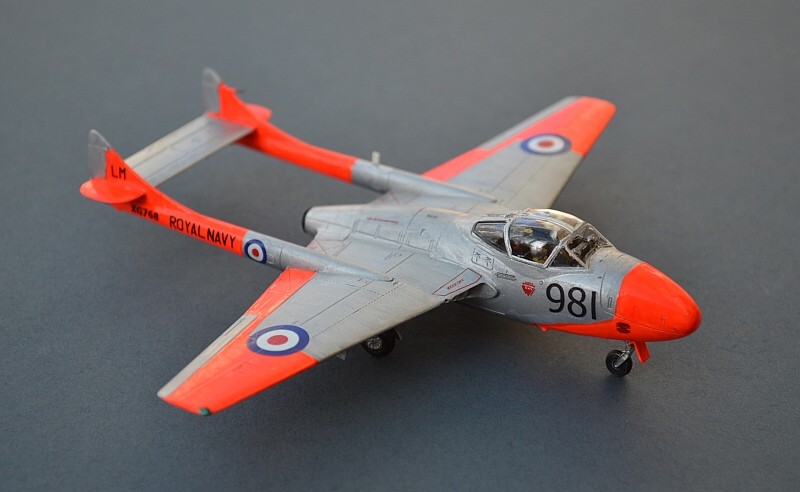
The arrival of the new Vampire T.11 kit in the 2013 Airfix catalogue was a very pleasant surprise and the kit itself certainly lives up to modern expectations, with excellent detail and well planned construction sequence. Fit is good, although there are a couple of minor tricky areas and surface detail is engraved a little too deeply. Decals for two RAF aircraft are well chosen and nicely printed on a comprehensive sheet, although the strong colour demarcations of the suggested dayglo scheme in particular will need the modeller to think carefully about decal translucency where the roundels cross colour. Nevertheless, at the price Airfix are asking, this has to be one of the best bargains of the year and one of the most enjoyable Airfix kits I have built in a long time.
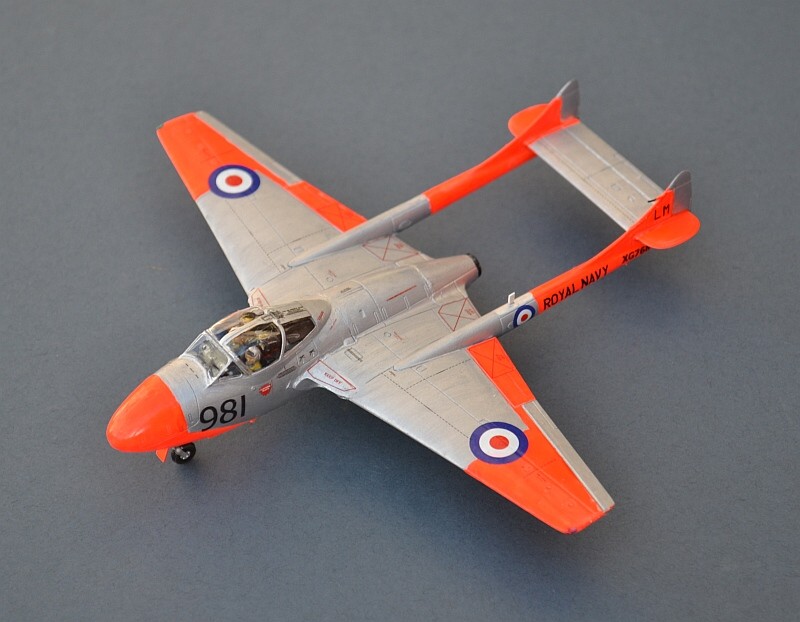
Assembly is straightforward, but it is important to follow the suggested sequence to ensure that everything fits. I had some difficulties with the position of the internal intake trunks (I seem to have fitted them slightly too low) with the result that I had some trouble fitting the lower wings. My external intakes were also a little out of position, needing a little filler to hide the gaps. Airfix supply 2 pilot figures, who look a little too modern for my tastes, so have been swapped for some older ones (who now look a little short!). The very fine 3-part canopy assembly, which can be posed open or shut, is one of the most impressive parts of the kit but also one of the trickiest. The plastic is really very thin (almost vac-form in dimensions); as a result you have to be extremely careful when separating it from the sprue, especially as the sprue attachments are in fairly tricky and critical positions (on all 3 parts). This is helped by the unusually flexible and resilient translucent plastic, but could be problem for the less dextrous or patient modeller!
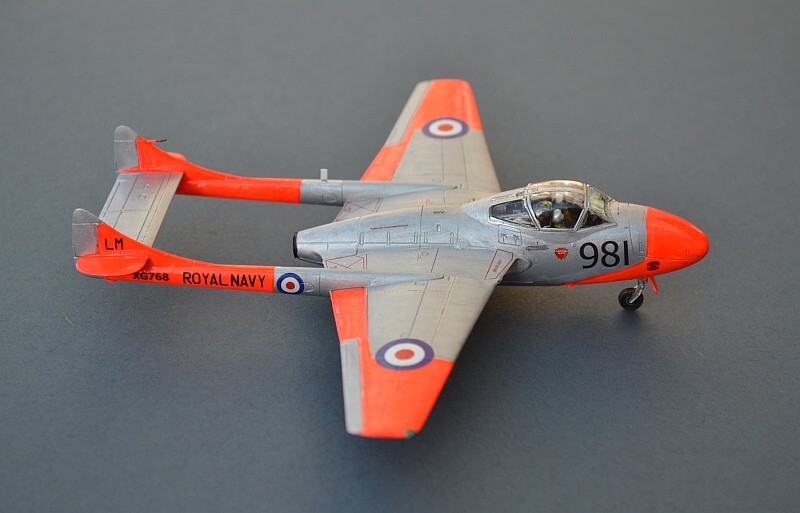
Brush painting "silver" aircraft like these is always a challenge, even more so with the fluorescent panels. I used Humbrol Metalcote polished aluminium for the main fuselage and wings, applying 3 coats thinned with a little white spirit to slow drying and help it to self-level, before a Klear top-coat to seal in the decals. The fluorescent panels received a white undercoat, then 2 coats of the new Humbrol 209 Fire Orange. I had hoped that this would be easier to apply than the difficult Revell fluorescents I have used in the past, but the Humbrol paint is very translucent and still needs several coats to get an even covering. It is also gloss (unlike Revell), which means it seems to be intrinsically thicker, (and given its translucency I didn't want to thin any further), making the chances of brush marks or runs much higher.
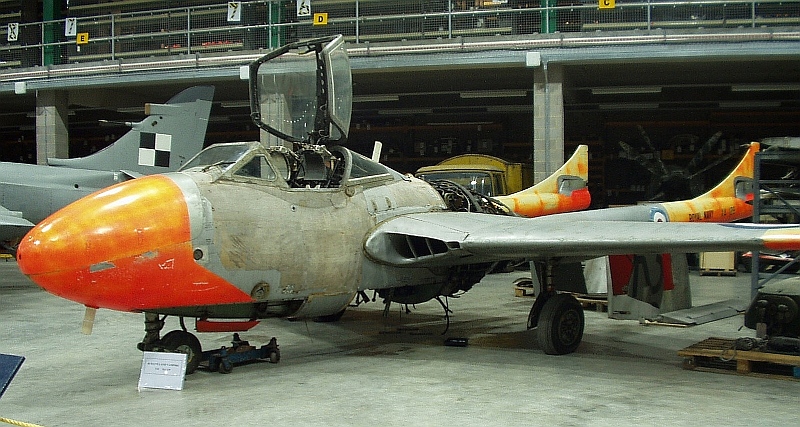
An example of the real thing sits forlorn in the Cobham Hall at the Fleet Air Arm Museum
Finally, I added some simple wire ejector seat handles to my seats and a plastic strip radio aerial on the port upper boom, but otherwise the kit is built out the box. Nose weight is essential for these twin boom kits and the construction sequence allows you to add it at a late stage through the belly gun-pack fairing.
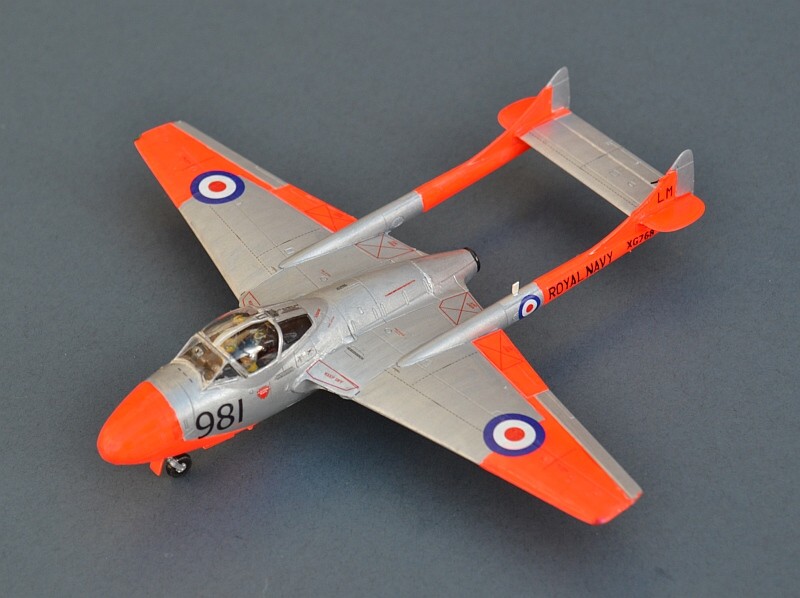
Decals for an RN aircraft are my own selection from the spare transfers box, plus some home-made ones for the serial and side numbers, although I have no doubt that some professional after-market ones will be along very soon! The home-made approach using clear inkjet decal paper was a qualified success this time; for some reason the decals curled outward when applied to the kit, requiring liberal application of Klear to try and settle them on the surface.
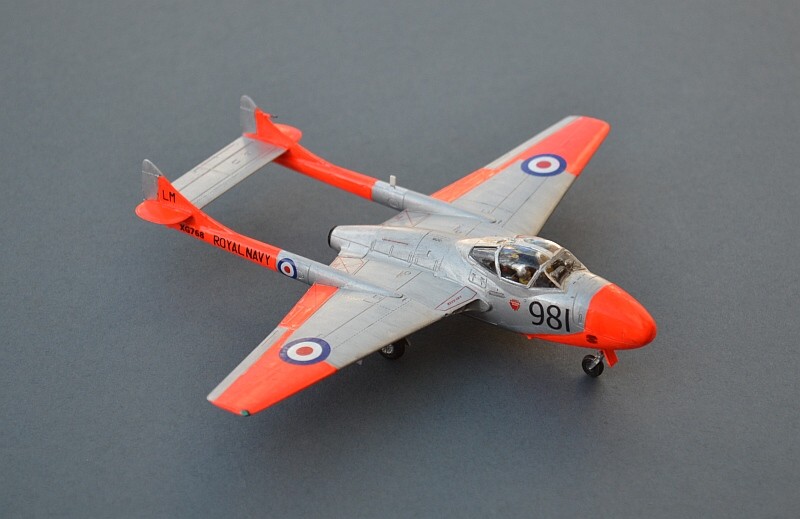
This is a really nice modern kit of an important type, with plenty of scope for different colour schemes. One of the aircraft depicted in the kit decals (WZ507) is currently a regular performer at UK airshows, where it never fails to impress.
More RN Jet Aircraft on my RN Jets Pages
.jpg)
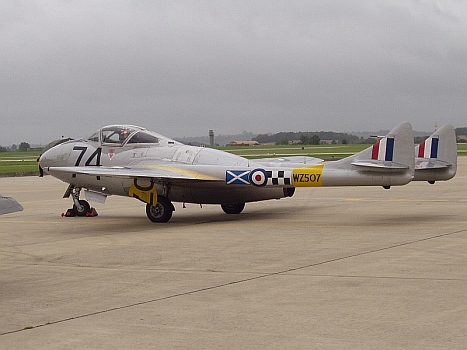
Left: © Crown Copyright IWM ((RAF-T 1107) Right: Yeovilton Air Show 2006
718 Sqn Fleet Air Arm, Royal Naval Volunteer Reserve, RNAS Stretton, 1956
Airfix T.11 1/72, with mix of kit, Modeldecal and own decals.
Back in the 1950s, the Fleet Air Arm maintained a number of shore-based Volunteer Reserve squadrons. 718 was one such unit, operating as the Northern Air Division from RNAS Stretton (HMS BLACKCAP), midway between Liverpool and Manchester (you can still see the old runways just off the south side of the M56). Along with 767 Sqn, the unit's primary role was to convert RNVR Pilots to "modern" jet aircraft, using Supermarine Attackers and De Havilland Sea Vampires. Trained pilots would then join the operational RNVR Squadrons, 1831 (fighters) and 1841 (ASW) or augment regular FAA squadrons.
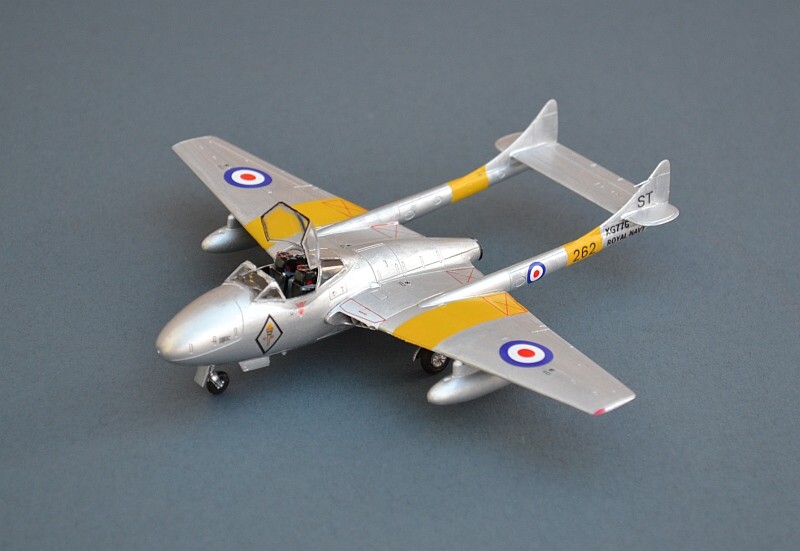
The RNVR Air Branch was dissolved in 1957 in the wake of the infamous 1957 Duncan Sandys Defence White Paper; RNAS Stretton closed a year later.
Another T.22 - why not? I had always intended to build more than one, so strike whilst the iron is hot etc etc. (and I think I may even manage a few more).
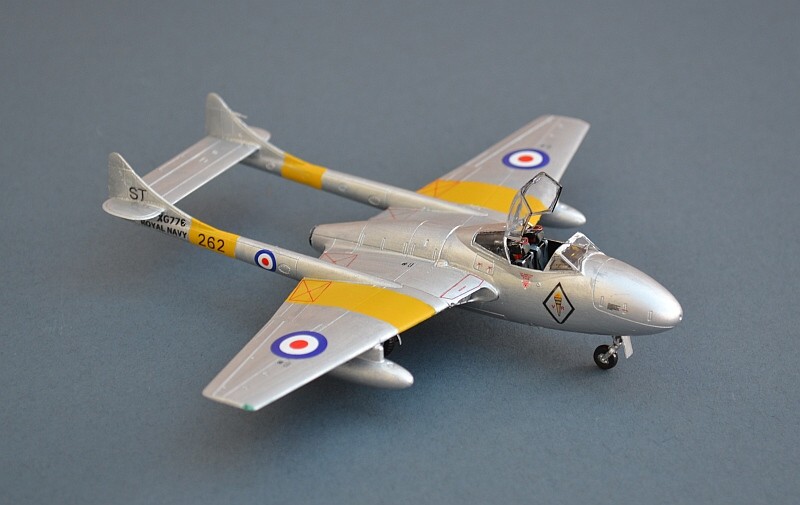
This really is a most enjoyable kit, and forearmed with experience of the tricky parts of the first one, I have tried to make a few improvements. Firstly, I added some tin foil seat belts to the cockpit, in order that I can leave the canopy open. I have also added the underwing fuel tanks for variety, although it looks as though RN aircraft only carried these for transit flights between bases.
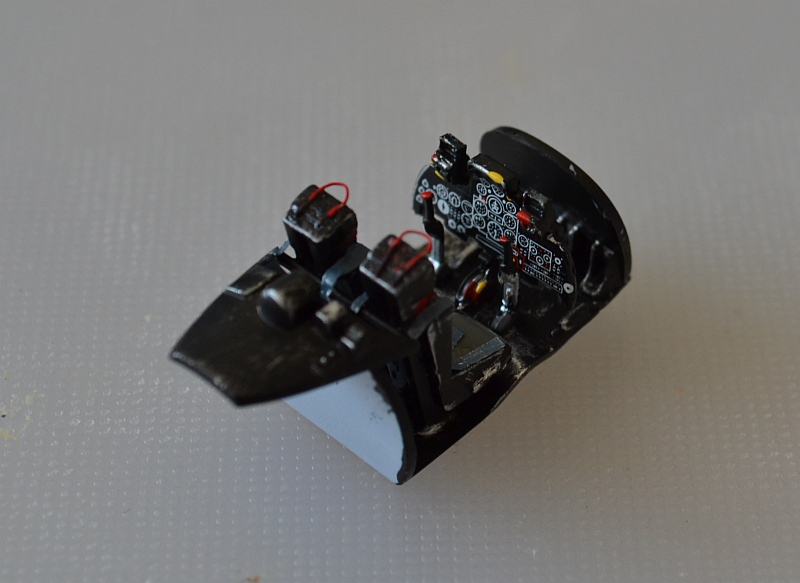
The inner intakes were located much more carefully than before, and I then added the outer intake lips after the upper wing. This is not what the instructions tell you to do, and you have to force them in to the gap, but it meant that I was able to close the joint with the wing much more neatly. Strangely though, I encountered a different problem this time with the wings, or at least a far worse instance of the problem I had before. This time the lower inner port wing really would not sit flat and I couldn't see what was causing the problem. I think the wheel wells were interfering with the inner well details, but I don't entirely understand why it happened on this kit and not the other, unless I fitted the upper wing differently somehow.
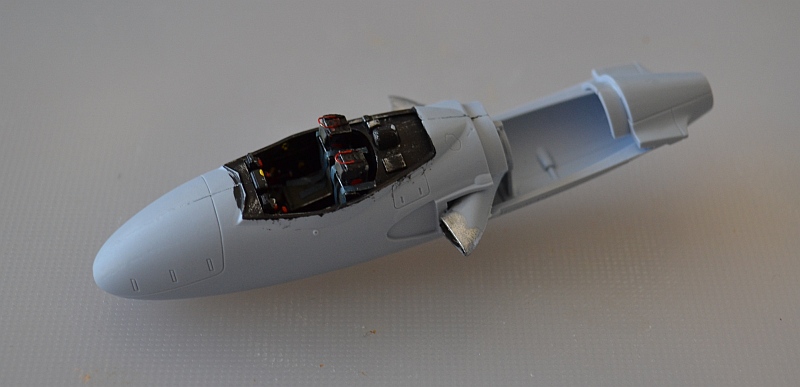
In the end I whittled away part of the well walls and all clicked together quite happily, albeit leaving a large gap (nearly a millimetre) between wing and fuselage - out with the filler again! I also found (and it may be the same problem) that the booms didn't fit quite as easily or as squarely. This kit definitely raises the bar for Airfix quality at an amazing price, with the result that I am probably being over-critical; these were fairly minor problems, requiring little more than care in assembly and a small amount of filler to resolve, and with the exception of the fiddly canopy, I still judge this kit to be an easy, well engineered and very satisfying build.
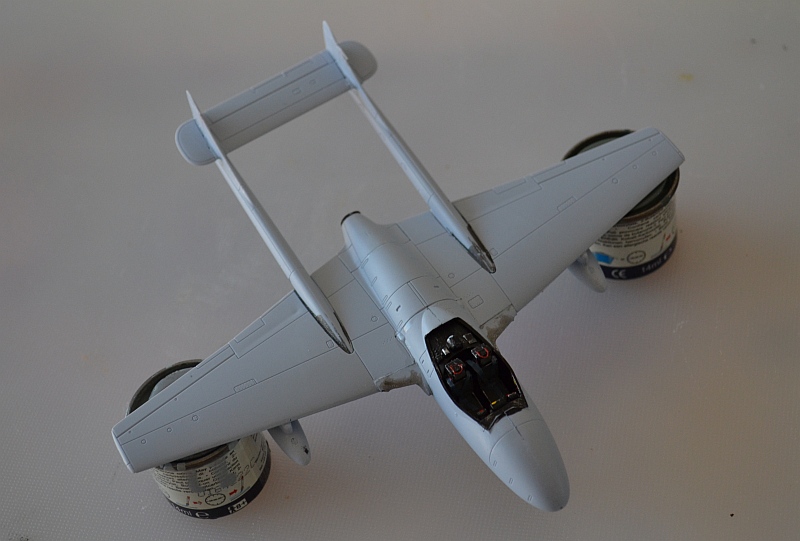
Paint is the same approach as before - brush applied white spirit thinned Humbrol polished Aluminium and Matt Yellow (24) for the trainer bands, with Klear top-coats to finish and seal in the decals. I've seen a couple of builds elsewhere with a well weathered look and dark panel lines which don't gel with the photos I have found, so I have left this one clean and well tended. Transfers (decals) are once more a mix of the generic kit markings, plus a few home made inkjet serials and titles. Note that whilst the kit scheme has a matt black glare panel in front of the canopy, the RN aircraft don't seem to have had this.
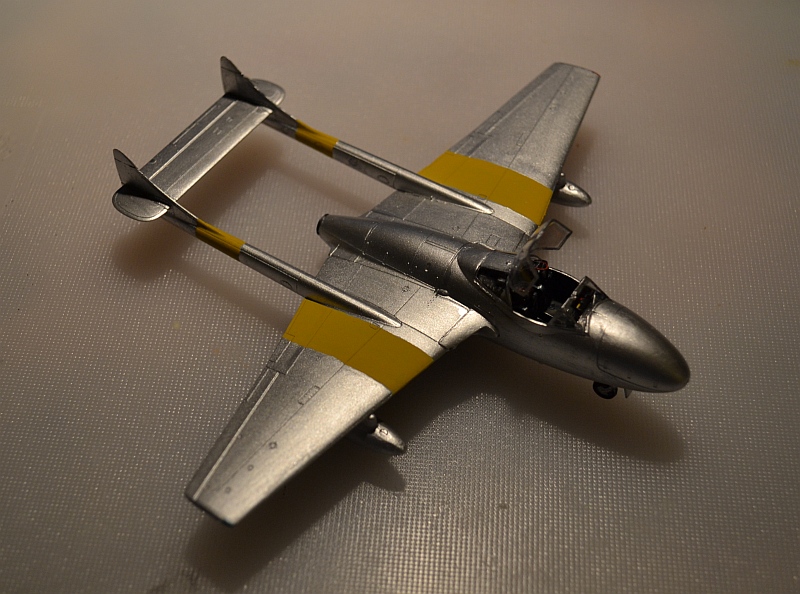
The distinctive 718 Sqn VR diamond and torch symbol comes from an old Modeldecal Attacker sheet.
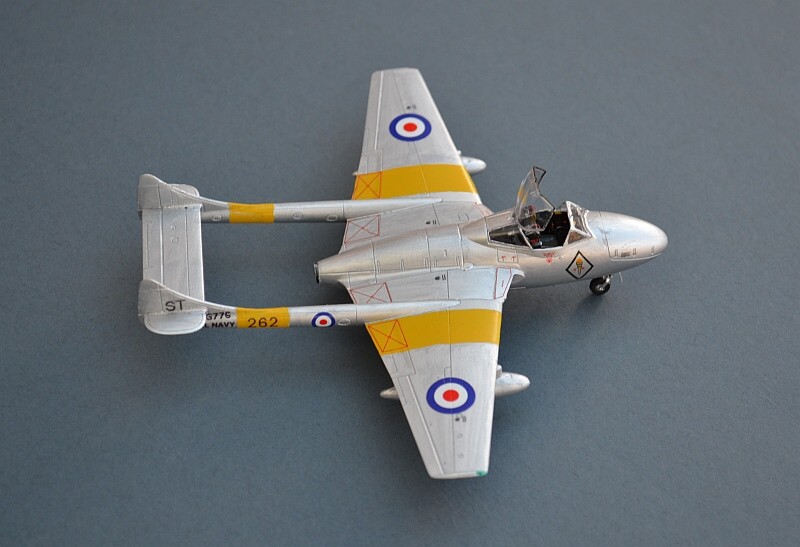
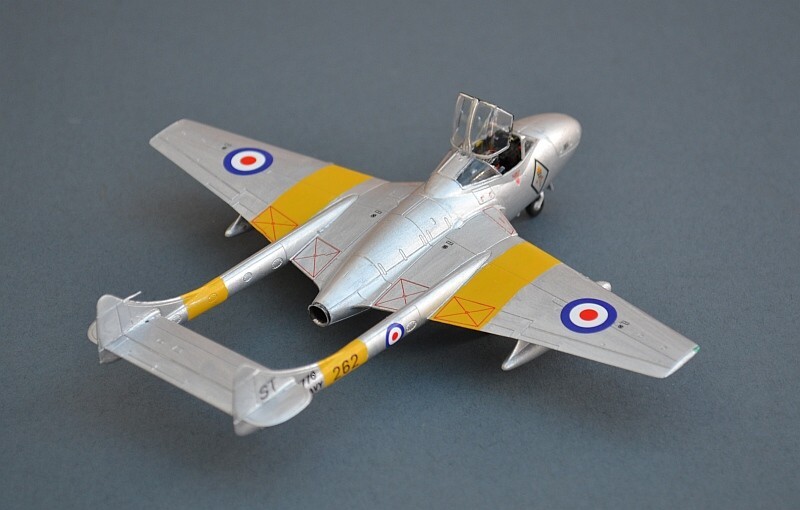
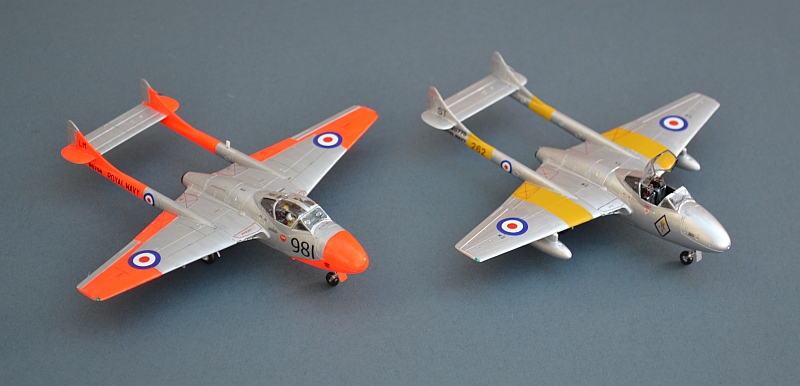
Link to more RN Jet Aircraft on my RN Jets Pages
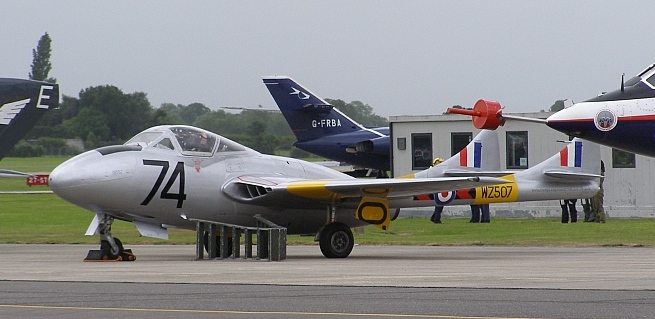
Restored Vampire T.11 at the Yeovilton Air Show 2006
Link to previous month Link to Next Month
www.gengriz.co.uk
Background Image - the North Weald Vampire Preservation Group's T.11 Vampire in Flight.